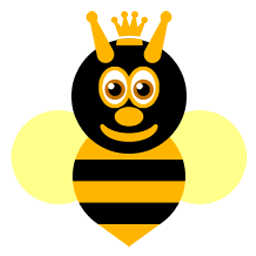Friday, April 22, 2011
Photography Unveiled
Do you like this story?
 |
| © Curtis Wehrfritz |
The Alternative Processes Behind Photo Alchemy
The current exhibit, Photo Alchemy, here at photography includes hauntingly beautiful photographs that have piqued the interest of many viewers. That interest leads some to curiosity about how these alluring alternative process photographs were created. To help out, here are some definitions of the processes that were used to create the images. Follow the links to see an example of each process.
Daguerrotype: (shown above) An early variety of photograph produced on a highly polished silver plate, or copper plate covered with silver, and rendered sensitive by the action of iodine, or iodine and bromine, on which, after exposure in the camera, the latent image is developed by the vapor of mercury. See: he speaks with the raven, first as a boy, then as a man –Curtis Wehrfritz
 |
| © Christina Z. Anderson |
Ambrotype: A photograph created using a positive image on a sheet of glass using the wet plate collodion process. The difference between ambrotype and wet plate collodion is that ambrotype uses the plate image as a positive instead of a negative. One side of a clean glass plate is covered with collodion then dipped in a silver nitrate solution. The plate is exposed to the subject while still wet. The plate is then developed and fixed. See: Power Lines, Oregon –Jody Ake
Mordançage: (shown above) Mordançage is an alternative photographic process that alters silver gelatin prints to give them a degraded effect. The mordançage solution works in two ways: it chemically bleaches the print so that it can be redeveloped, and it lifts the black areas of the emulsion away from the paper giving the appearance of veils. Once the emulsion is lifted it can be removed and manipulated depending on the desired outcome. See: Rending the Curtain –Christina Z. Anderson
 |
| © Bryan David Griffith |
Platinum/Palladium: Platinum prints are photographic prints made by a monochrome printing process that provides the greatest tonal range of any printing method using chemical development. Unlike the silver print process, platinum lies on the paper surface, while silver lies in a gelatin or albumen emulsion that coats the paper. Palladium is a chemical element that is a rare and lustrous silvery-white metal. See: Traverse –Brian David Griffith (shown at right).
Wet-Plate Collodion Tintype: Tintype is a photograph made by creating a direct positive on a sheet of iron metal that is blackened by painting, lacquering or enameling and is used as a support for a collodion photographic emulsion. See: Finally Free –Barbara Dombach
Cyanotype: Cyanotype is a photographic printing process that produces a cyan-blue colored print. The process includes two chemicals: ammonium iron citrate and potassium ferricyanide, usually painted on paper or fabric. See: Winter Weave –Jose Betancourt and Susan Weil.
 |
| © Anita Douthat |
Photogram: A photogram is a photographic image made without a camera by placing objects directly onto the surface of a photo-sensitive material, such as photographic paper, and then exposing it to light. The result is a negative shadow image varying in tone depending on the transparency of the objects used. Areas of the paper that have received no light appear white, those areas exposed appear grey. See: Transparent Uniforms X –Anita Douthat (shown at left).
Printing Out Paper: This paper is used to produce contact prints in daylight. First the paper is exposed under the negative to produce a deep purple-red print. Then the image is washed, toned and fixed in 15% hypo solution. Then it is washed again and sometimes toned using gold or other chemicals. See: Madeline Larsen, from the series memento –Karen Stentaford
 |
| © Jim Leisy |
Van Dyke Brown: First the choice of paper is coated with solution under tungsten light, air dried and coated a second time, if desired. Then the negative is placed on the thoroughly dried coated substrate and is weighted with a piece of glass. The glass negative substrate sandwich is exposed to a source of UV light. The image is now washed, or cleared, in several changes of water to remove soluble iron and silver compounds. See: Amateur Physics: String Theory –Jim Leisy (shown at right).
Ziatype: The ziatype uses lithium palladium chloride as the primary metal and ammonium ferric oxalate for the iron compound to produce a continuous tone print. The color and contrast are controlled chemically, and a full image is printed out instead of developing it out so you see what you get after exposing. See: Reverse Engineering –Mark Rupert
So, there you have it. Curiosity satisfied! Let us know if there are any other images in the show that intrigue you and we'll get word directly from the artist about the process or techniques used to create the photograph. Contact Laura with your questions.
Definition References:
Subscribe to:
Post Comments (Atom)




0 Responses to “Photography Unveiled”
Post a Comment